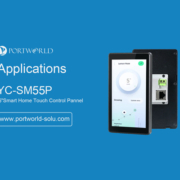What’s the Difference Between System on Module and Carrier Board?
When designing embedded systems or custom electronics, two critical components come into play: the System on Module (SoM) and the Carrier Board. Understanding the roles and differences between these two can help developers, engineers, and product managers make better decisions when choosing hardware platforms for their projects.
In this article, we’ll break down what each component does, how they interact, and when you might choose a modular SoM and carrier board setup over a single-board computer (SBC).
What is a System on Module (SoM)?
A System on Module (SoM) is a compact, self-contained computing unit that integrates the core functions of a system—typically including:
- Processor (CPU, often ARM or x86-based)
- RAM
- Storage (eMMC or NAND Flash)
- Power management ICs
- Often: GPU, wireless modules (Wi-Fi/Bluetooth), and security chips
SoMs are designed to be plug-and-play computing cores, mounted on a larger carrier or baseboard. They’re optimized for performance, thermal control, and ease of integration.
Key Benefits of SoMs:
- Rapid development: Offloads core hardware design to a ready-made module.
- Scalability: Easily upgradeable by swapping to a higher-performance SoM.
- Reduced risk: Shortens development cycles by relying on a pre-tested core.
What is a Carrier Board?
A Carrier Board, also known as a baseboard or motherboard, is the custom-designed board that provides the SoM with all its peripheral interfaces and I/O connectivity. Think of it as the infrastructure that connects your SoM to the outside world.
The carrier board includes:
- Power supply circuits
- USB, Ethernet, HDMI, or LVDS interfaces
- GPIO, UART, SPI, I2C ports
- Audio and camera interfaces
- Sensors, custom modules, or industry-specific connectors
Unlike the SoM, the carrier board is often application-specific, designed based on the product’s needs (e.g., smart home panels, industrial controllers, robotics).
Key Differences Between SoM and Carrier Board
| Feature | System on Module (SoM) | Carrier Board |
|---|---|---|
| Purpose | Core processing unit | Application-specific connectivity and I/O |
| Includes | CPU, RAM, storage, PMIC, sometimes Wi-Fi | USB, Ethernet, HDMI, sensors, power supply |
| Design | Generic, reusable | Customized per product requirements |
| Flexibility | Swappable, scalable | Tightly coupled to final hardware design |
| Who Designs It? | Often provided by vendors (e.g., Portworld, Toradex, Raspberry Pi CM) | Typically designed by the product OEM or integrator |
Why Use a SoM + Carrier Board Architecture?
-
Faster Time-to-Market
SoMs come pre-certified and tested, so developers can focus on designing the carrier board for their specific use case, greatly reducing development time. -
Cost-Effective in Low to Mid Volumes
Avoiding full hardware design for CPU, memory, and power means fewer engineering resources needed. -
Easier Upgrades & Maintenance
Want to upgrade from a quad-core CPU to an octa-core in the future? Just switch the SoM without redesigning the whole board. -
Better Thermal Management
Many SoMs are built with industrial-grade thermal tolerances, especially useful in smart home or industrial control applications.
Example Use Case: Smart Home Control Panels
For products like Portworld’s 4-inch and 5-inch Android-based smart home control panels, a SoM provides the computing backbone, while the carrier board is customized to support:
- Zigbee or Wi-Fi modules
- Capacitive touch display interface
- Power over Ethernet (PoE) support
- GPIO for sensors or relays
This approach lets Portworld support rapid product customization for different clients without changing the whole system—only the carrier board layout is updated, reducing engineering effort and cost.










